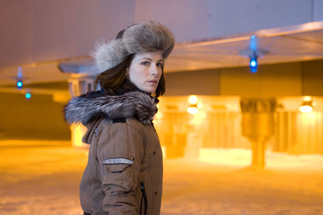|
|
Book vs. Movie: WhiteoutBy Russ BickerstaffSeptember 14, 2009
The Book The story begins at the scene of the crime — an unidentified body of a man is found in the Antarctic next to a few holes that had been drilled into the ground. With his face disfigured, there's no way to tell who it actually was, so the investigation must start with determining the identity of the victim. The sheriff investigating the death is one Carrie Stetko — a short woman with a mysterious past. There are rumors that she's been posted in Antarctica because she killed someone. There are rumors that she's gay. There are rumors that she's in danger of losing her job. And along comes a very peculiar murder with very few leads. From here we get introduced to the culture of the Antarctic — a place with no permanent residents populated largely by solitary people — mostly men. Carrie is alone, trying to piece together who it was that was killed and why in one of the most desolate and dangerously cold landscapes on Earth. Aside from the particulars of life in the Antarctic — the fact that no one is allowed to carry guns — the international flavor of the culture and the climate which can kill someone from exposure in very short order — Whiteout plays very much like something of an uninspired police procedural. The whodunit and who it's been done to mystery is cleverly drawn and very, very realistic, but it lacks any poetry or larger scope. Take away the setting and it becomes something of a loose skeleton of an episode of Law & Order without the order.
[ View other columns by Russ Bickerstaff ]
[ View other Book vs. Movie columns ]
[ Email this column ]
|

|
|
|

|
Friday, November 1, 2024
© 2024 Box Office Prophets, a division of One Of Us, Inc.


